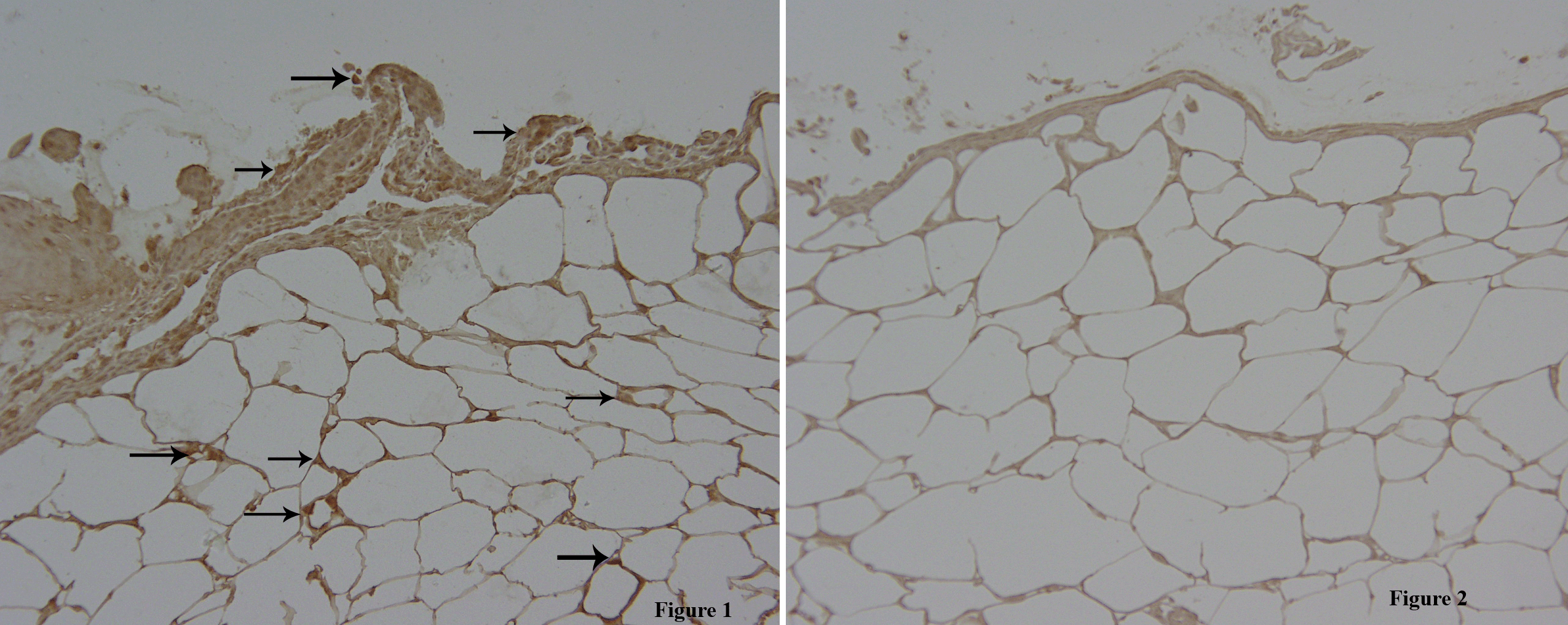Sunday, October 8, 2006
10982
A Novel Method of Topical In-Vivo Gene Silencing Using siRNA
Purpose: As our knowledge of wound healing increases, it has become clear that altered gene expression plays an enormous role in dysfunctional wound healing. Restoration of normal gene expression is one significant way to restore normal wound healing. However to date, methods of accomplishing this in-vivo are scarce. In this study we use the emerging technology of RNA interference to modulate gene expression in-vivo. To accomplish this, we have developed a novel, topical method to deliver small interfering RNA (siRNA) directly to the wound bed, allowing for local gene modulation without systemic effects. As proof of concept, in this project, we have silenced MAPK-1 as a housekeeping gene. This technique is expandable to almost any gene of interest.
Methods: Our lab's method of murine model of excisional wound healing is used. Under sterile conditions, paired 6-mm circular, full-thickness wounds are made on the dorsal skin of the mice. A donut-shaped 12-mm splint made of 0.5-mm-thick silicone sheeting is then placed around the wounds and adhered to the skin with cyanoacrylate glue and interrupted 6-0 nylon sutures. A transparent sterile occlusive dressing is then placed over the wound and the splint. 24 hours after creation of the wounds, siRNA is placed in the wound bed. Using sterile saline and standard media, a 0.4% agarose gel matrix is created. The siRNA (Qiagen, Valencia CA) is diluted with transfection buffer, and then combined with the transfection reagent. It is allowed to incubate to allow for the formation of transfection complexes. At that point the siRNA is mixed with the gel and applied to the wound. Treatment is continued for 5 days, at which point the gel is removed. The wounds are harvested and prepared for histologic analysis or protein extraction for western blot analysis.
Results: Histologic evaluation of the wound bed by localization of MAPK-1 protein using a monoclonal antibody reveals significant knockdown of MAPK-1 expression in the treated animals versus controls. Figure 1 represents the control wound bed, with numerous dark brown positive cells (some noted with arrows) indicating positive MAPK-1 protein. Figure 2 shows the treated wound bed, with a paucity of positively stained cells. The treated wounds have almost no MAPK-1 protein in the wound bed underlying the area of gel. Tissue outside of the treatment area not in contact with the gel shows normal MAPK-1 staining consistent with control animals (not shown). MAPK-1 protein expression by western blot similarly shows significant decrease in treated wounds versus controls.
Conclusion: In this study we have shown that we are able to deliver topical gene silencing to a wound bed using siRNA in a agarose gel matrix. This is the first known application of siRNA in a topical fashion in-vivo, and the first example of topical gene modulation in-vivo. With this proof of concept, the door is opened to silencing, in-vivo, other genes known to be involved in dysfunctional wound healing, with the hope of restoration the normal wound healing biology.

